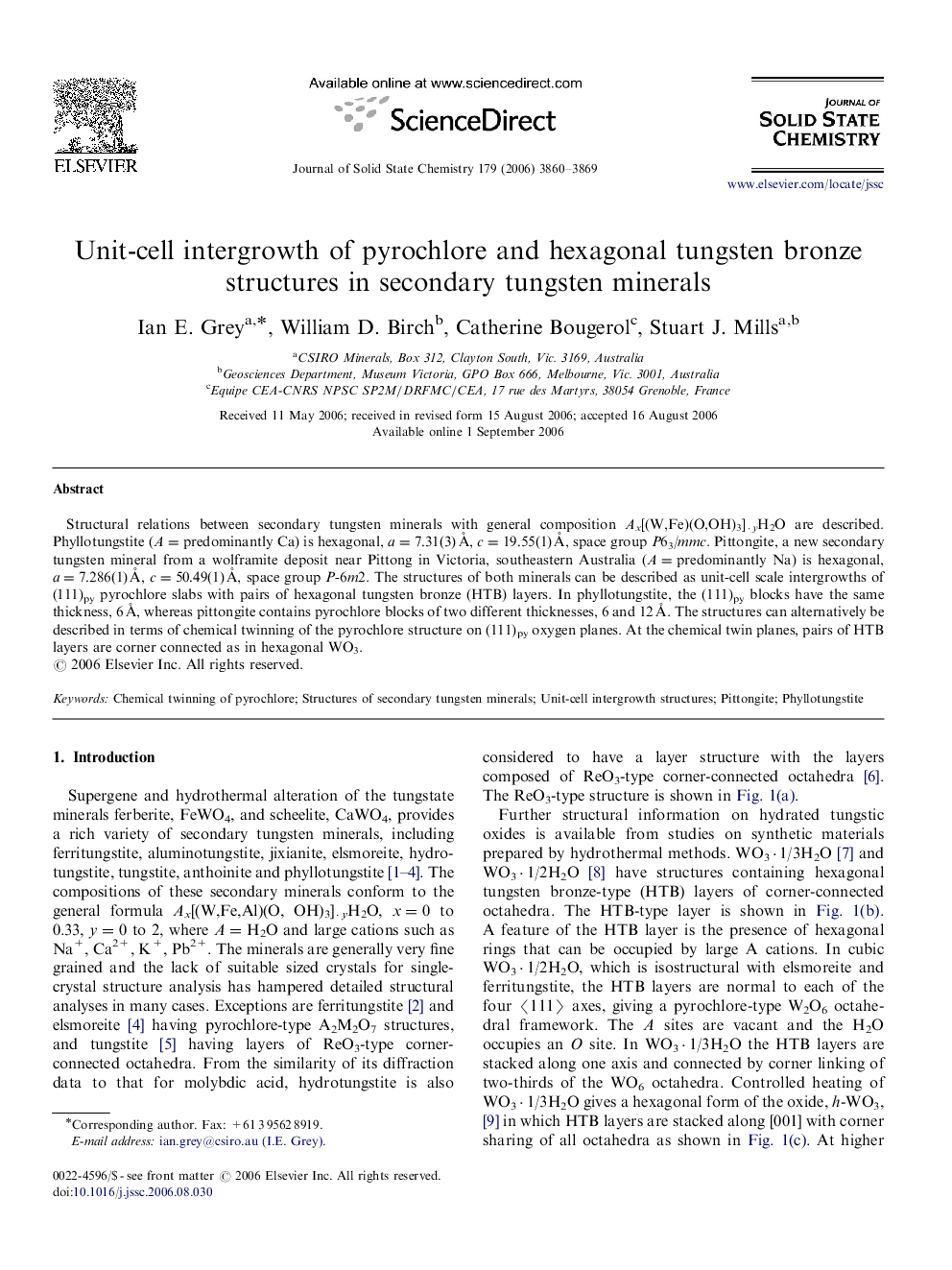| کد مقاله | کد نشریه | سال انتشار | مقاله انگلیسی | نسخه تمام متن |
|---|---|---|---|---|
| 1331772 | 979015 | 2006 | 10 صفحه PDF | دانلود رایگان |

Structural relations between secondary tungsten minerals with general composition Ax[(W,Fe)(O,OH)3]·yH2O are described. Phyllotungstite (A =predominantly Ca) is hexagonal, a=7.31(3)Å, c=19.55(1)Å, space group P63/mmc. Pittongite, a new secondary tungsten mineral from a wolframite deposit near Pittong in Victoria, southeastern Australia (A =predominantly Na) is hexagonal, a=7.286(1)Å, c=50.49(1)Å, space group P-6m2. The structures of both minerals can be described as unit-cell scale intergrowths of (111)py pyrochlore slabs with pairs of hexagonal tungsten bronze (HTB) layers. In phyllotungstite, the (111)py blocks have the same thickness, 6 Å, whereas pittongite contains pyrochlore blocks of two different thicknesses, 6 and 12 Å. The structures can alternatively be described in terms of chemical twinning of the pyrochlore structure on (111)py oxygen planes. At the chemical twin planes, pairs of HTB layers are corner connected as in hexagonal WO3.
Polyhedral representation of the structure of pittongite viewed along [110].Figure optionsDownload as PowerPoint slide
Journal: Journal of Solid State Chemistry - Volume 179, Issue 12, December 2006, Pages 3860–3869